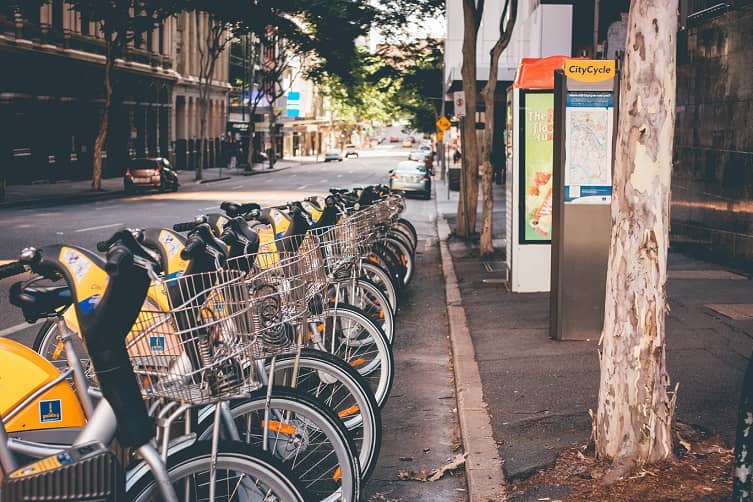In May the Alumni Hungary Webinar Series started its brand new series. The webinars feature outstanding Hungarian scientists and professionals presenting their fields of expertise. To provide you a greater depth to our topics, from now on you can also read interviews with our presenters!
This year’s first speaker was Samu Szemerey, an architect and urbanist specializing in technology and creative industries in the built environment. He is the Director of Content at KÉK Hungarian Contemporary Architecture Centre and the lead expert at Lechner Nonprofit Ltd. where he works on urban services and smart city projects in Hungary. In his webinar on 12 May 2021, he provided an overview of smart city concepts, and the future of urban life in the post-COVID era.

Tell us a bit about yourself! How did you become an architect, and why did you choose this profession?
Choosing architecture was a speculative decision, which became a love story. I was hoping to combine my interests in both natural sciences, humanities, and arts when I picked architecture as a high school student. The reality of the profession is of course very different, but in the long run, my assumptions were correct. This is even more true to urban design and planning, which are impossible to do without combining social, cultural, economic, and other fields, including most recently, information technology, with architecture and systems thinking. I see architecture as a form of knowledge and a way of understanding the world. This enables the application of an architect’s knowledge in many fields, way beyond creating buildings.

How would you define the concept of the smart city? What are the characteristics that make a city “smart” and innovative? Could you mention some examples for smart city solutions in Hungary and internationally?
Smart cities combine data and digital technologies, sustainable services, and community involvement to improve their environment, infrastructure, and the quality of life offered for those who work or live there. Data and digital solutions are important not because they are new and innovative, but because these are already being harvested by private companies, with whom cities must compete and take the leading role in implementing locally. Services are important because these can create a background infrastructure that improves the quality of everyday life, and also motivates innovation and entrepreneurship. Communities are key, as today’s cities operate as ecosystems where many partners have to contribute to achieving their goals, from establishing concepts, all the way to actual managing of existing facilities.
Smart cities are not smart because they have implemented any number of “smart” or “digital” projects, but because they operate in certain ways that offer an environment of growth for inhabitants, without overstretching their natural or financial resources. Instead of looking for smart indicators, we might be better off stepping beyond this terminology and looking at life opportunities, sustainability of the environment and operations, and some other factors to assess the performance or the quality of cities (or municipalities).

Smart city solutions often concentrate on projects (smart street furniture, city applications, environmental sensors, camera systems, etc.). Without an integrative backbone, these are mostly just gadgets with limited use. The exemplary cities (for example Amsterdam, Helsinki, Barcelona in Europe or Debrecen, Szeged, Kaposvár, Tamási, Budapest in Hungary) tend to focus on certain areas of activities which are key to their operations. Transport, energy, utilities are typical “hard” backgrounds for smart projects, while education, healthcare, or community life are the typical “soft” channels of developing smart programs. The effects of such developments become beneficial when they are linked into an integrated system of services, data collection, and operation.
How the COVID-19 pandemic has changed our thinking about the future of cities and urban life? What are the challenges and what solutions are needed?
If we look beyond the immediate and quite traumatic experiences of the recent months, there are a few areas where the sudden and radical changes are likely to have long-term effects.
The way work is understood, especially in the knowledge industries and administration, is likely to change, especially since it was already changing before the pandemic. Remote work solutions, hybrid environments, digital platforms have proven that work can be flexible and adaptable.

On the other hand, this affects many other areas. Housing typologies will likely adapt to new needs to create working spaces in private apartments, or co-working spaces in neighborhoods. Public spaces can adapt to accommodate a diversity of neighborhood activities (instead of parking) in small-scale, distributed locations. Transportation can adapt to more individual approaches, and reduced requirements for business travel.
Tourism and hospitality will likely take a long time to fully recover, and this might create opportunities to address some pressing issues of over-tourism and mass consumption in hot spots. Limited access to heritage sites, better distribution of attractions, more direct links between tourism spending and resources for local life are just a few solutions that we will likely see in the coming years.
What are the next steps for smart cities? To which direction does this field develop?
Smart cities as a terminology might become outdated quite soon. However, the various concepts and components will become stronger on their own.
Urban data infrastructures and platforms that allow new services on top of open data are one direction where especially large urban areas might be going. This will likely be enhanced by the spread of 5G and IoT protocols.

Traditional utilities such as transportation, water management, sewage, heating are still transforming into networked and responsive systems. This is also where critical conflicts are likely to happen (terrorist attacks etc.).
A key testing ground for the future of smart solutions is in villages and small towns, both in the developed and in the developing world. We are likely to see highly innovative and radical concepts coming from this context, and it is critical to be able to narrow the gap between what large cities and smaller places can offer to keep the balance of global urbanization in the face of climate change and other challenges we are facing.
The webinars and the videos of previous presentations are only available for registered members of the Alumni Network Hungary. To join the network click HERE!